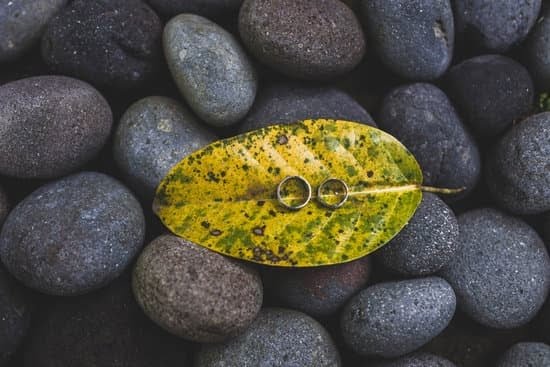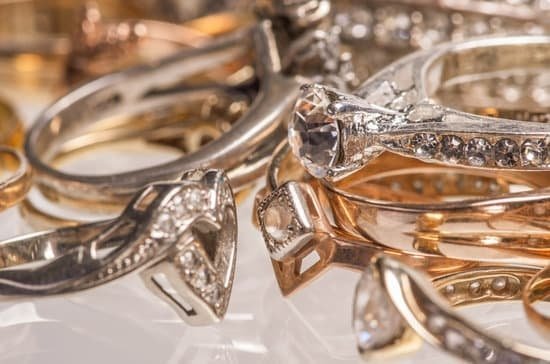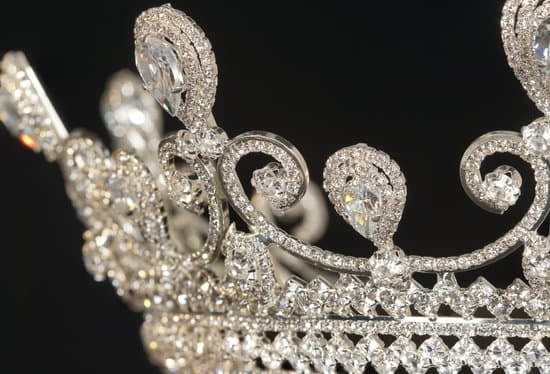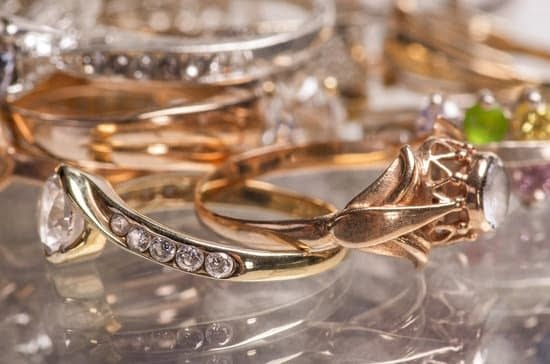Art Deco jewelry, with its intricate designs and timeless elegance, has captivated the hearts of collectors and enthusiasts for decades. From the roaring 1920s to the glamorous glitz of old Hollywood, this unique style has left an indelible mark on the world of fashion and design.
But what exactly is Art Deco jewelry, and why is it so highly valued? In this blog post, we will explore the historical significance of Art Deco jewelry, its distinct features, and delve into the factors that contribute to its value.
Art Deco emerged as a prominent art movement in the early 20th century, flourishing during the interwar period. Its aesthetic was a response to societal changes brought on by World War I, reflecting a desire for modernization and progress.
Inspired by cubism, futurism, and other avant-garde movements, Art Deco embraced geometric shapes, clean lines, bold colors, and luxurious materials. This unique style showcased a fusion of Eastern influences, such as ancient Egyptian motifs or exotic Asian elements blended with modern European design.
When it comes to Art Deco jewelry specifically, several key features define this iconic style. Geometric shapes such as stepping stones or sunbursts were prevalent in designs. The use of materials like diamonds and platinum symbolized opulence and sophistication. Intricate patterns like chevron or fan motifs added depth and texture to pieces. These characteristics combine to create stunningly beautiful objects that not only serve as exquisite accessories but also encapsulate an era renowned for innovation and cultural transformation.
Stay tuned as we dive deeper into the world of Art Deco jewelry. We will discuss its rarity and exclusivity due to limited availability given its age and short production period.
Additionally, we will explore how this style of adornment holds historical significance symbolizing an era of artistic reinvention while analyzing current market trends in terms of demand for these exquisite pieces. Furthermore, we will examine the various factors that contribute to its value and investment potential, ultimately providing tips and guidance for those interested in buying Art Deco jewelry.
Art Deco
Art Deco: A Brief Overview
The Art Deco movement emerged in the early 20th century, reaching its peak popularity between the 1920s and 1930s. It originated in Europe, specifically in France, and quickly spread across the world, influencing various areas of design, including architecture, fashion, and jewelry. The style was a response to the preceding Art Nouveau movement, which emphasized organic and flowing forms. In contrast, Art Deco embraced geometric shapes and clean lines.
One of the key features that defined Art Deco jewelry is its emphasis on abstract motifs and vibrant colors. Geometric shapes such as triangles, rectangles, and circles were commonly incorporated into designs. Diamonds became one of the most popular gemstones during this time period due to their ability to reflect light and enhance the overall aesthetic appeal. Other precious stones like emeralds and rubies were also utilized to add a pop of color.
Another significant characteristic of Art Deco jewelry is the use of premium materials such as platinum. This metal’s strength allowed for intricate detailing and delicate craftsmanship. The pieces often featured detailed engravings or filigree work that added depth and elegance. Additionally, symmetrical patterns were prevalent in Art Deco jewelry, reflecting the influence of industrialization on design.
The combination of bold colors, geometric shapes, intricate patterns, and high-quality materials makes Art Deco jewelry truly unique. Its distinctive style captures the spirit of an era marked by technological advancements and societal changes. As a result, genuine Art Deco pieces have become highly sought after by collectors and enthusiasts worldwide due to their historical significance and exquisite craftsmanship.
To sum up,
- Art Deco originated in Europe in response to the preceding Art Nouveau movement.
- It emphasized geometric shapes, clean lines, abstract motifs, vibrant colors, and delicate craftsmanship.
- Platinum was frequently used for its strength and intricate detailing.
- The style symbolizes an era marked by cultural and artistic transformation.
Features of Art Deco Jewelry
Geometric Shapes and Bold Colors
One of the defining features of Art Deco jewelry is its use of geometric shapes in design. This style broke away from the flowing, organic forms of previous periods, such as Art Nouveau, and embraced the sleek lines and symmetrical patterns inspired by modern technology and architecture. Triangles, circles, rectangles, and trapezoids were frequently incorporated into jewelry pieces, giving them a distinct visual appeal.
In addition to geometric shapes, Art Deco jewelry also utilized bold colors to make a statement. Vibrant gemstones like emeralds, rubies, sapphires, and amethysts were often paired together or contrasted with diamonds or onyx to create striking color combinations. These bold color choices exemplify the era’s desire for opulence and luxury.
Use of Materials: Diamonds and Platinum
Art Deco jewelry was known for its use of high-quality materials that reflected the prosperity and extravagance of the time. Diamonds became particularly popular during this period due to advancements in diamond cutting techniques that allowed for more brilliance and fire in the stones. In fact, many Art Deco pieces featured intricate diamond settings as focal points.
Platinum was another favored material in Art Deco jewelry due to its durability and silvery-white appearance. The strength of platinum allowed jewelers to create delicate yet intricate designs without compromising on structural integrity. The combination of diamonds and platinum became synonymous with Art Deco elegance.
Intricate Patterns
Another characteristic feature of Art Deco jewelry is its use of detailed patterns. These patterns often drew inspiration from ancient civilizations such as Egypt or Greece but with a modern twist. Popular motifs included sunbursts, chevrons, zigzags, and stylized animal or plant themes. These intricate patterns added depth and visual interest to the pieces while showcasing the skillful craftsmanship of the designers.
The combination of geometric shapes, bold colors, and intricate patterns in Art Deco jewelry creates a visually stunning aesthetic that continues to captivate collectors and enthusiasts today. The distinct characteristics of Art Deco jewelry make it not only valuable but also a wearable piece of art that embodies the spirit of an era.
Rarity and Exclusivity
Art Deco jewelry holds a special place in the world of vintage and antique jewelry due to its rarity and exclusivity. The Art Deco movement lasted from the 1920s to the early 1940s, a relatively short period in the grand scheme of history. This limited timeframe naturally restricts the number of genuine Art Deco pieces that have survived over the years, making them highly sought after by collectors and enthusiasts.
One factor that contributes to the scarcity of Art Deco jewelry is its age. As these pieces were created almost 100 years ago, many have been lost or damaged beyond repair. Additionally, World War II had a significant impact on the production of luxury goods during this time. The focus shifted towards military efforts, causing a decline in the creation of elaborate jewelry pieces. These historical circumstances further add to the rarity and exclusivity of genuine Art Deco jewelry.
Furthermore, the meticulous craftsmanship and attention to detail required for creating Art Deco jewelry also contribute to its limited availability. Many Art Deco pieces feature intricate designs with precise geometric shapes, delicate filigree work, and stunning use of different gemstones. The level of skill and expertise needed to produce such intricate designs is not commonly found today, adding to their desirability.
Overall, the combination of its age, historical significance, and unique characteristics make genuine Art Deco jewelry increasingly difficult to come by. Collectors are often drawn to these exquisite pieces due to their rarity and exclusivity. Their scarcity adds an element of allure for those seeking unique and valuable investments or statement pieces that showcase a pivotal era in art history.
Historical Significance
Art Deco jewelry holds significant historical value as it represents an era of cultural and artistic transformation. The movement emerged in the 1920s and 1930s, a time when society was experiencing great shifts in technology, design, and societal values. This period marked the transition from traditional and ornate styles of the Victorian and Edwardian eras to a more modern, sleek, and geometric aesthetic.
During the Art Deco era, artists and designers sought to break away from the opulence of previous periods by embracing simplicity, symmetry, and functionality. In turn, these principles were reflected in the jewelry of this time.
Art Deco jewelry often featured geometric shapes such as triangles, rectangles, and circles, combined with bold colors and contrasting materials. These designs were influenced by various sources including ancient civilizations like Egypt, Greece, and Rome as well as new advancements in technology like airplanes and skyscrapers.
The historical significance of Art Deco jewelry contributes to its value among collectors and enthusiasts. It not only serves as a tangible reminder of a transformative period in history but also showcases the technical skill and craftsmanship of master jewelers during this time.
Authentic Art Deco pieces are considered rare treasures because their production was relatively short-lived due to World War II disrupting access to precious gemstones and metals. Additionally, many exquisite pieces were dismantled over time to repurpose their valuable materials for new designs or sold for their intrinsic value.
This historical context adds an extra layer of desirability for those who appreciate both the beauty and symbolism behind Art Deco jewelry. Owning a piece from this era allows individuals to connect with a significant moment in history while also enjoying timeless elegance that continues to resonate today. As a result, demand for Art Deco jewelry remains strong among collectors worldwide who are willing to pay premium prices for outstanding examples that encapsulate the spirit of this remarkable artistic movement.
Market Value and Demand
The market value of Art Deco jewelry has experienced a significant increase in recent years due to its timeless appeal and growing demand. This can be attributed to several factors, including the scarcity of genuine pieces, the historical significance of the style, and its status as a luxury item. As a result, collectors, enthusiasts, and investors alike have shown a keen interest in acquiring these exquisite pieces.
One clear indicator of the strong market value for Art Deco jewelry is the record-breaking prices achieved at auctions. For example, in 2019, an Art Deco emerald and diamond bracelet sold at Christie’s auction house for a staggering $3.6 million. This not only highlights the exceptional craftsmanship and rarity of such pieces but also demonstrates the willingness of buyers to pay premium prices for these treasures.
In addition to high auction prices, there has been a noticeable surge in interest from both individual buyers and investors in recent years. The allure of owning a piece of history combined with the potential for long-term appreciation makes Art Deco jewelry an attractive investment choice. This increased demand has created a competitive marketplace where quality pieces are highly sought after.
To further illustrate this trend, research conducted by antique jewelry experts has shown that sales of Art Deco jewelry have consistently grown year after year. The steady increase in demand can be attributed to various factors, including changing fashion trends that favor vintage styles, as well as wider accessibility through online platforms that connect sellers and buyers worldwide.
| Year | Art Deco Jewelry Sales (in millions) |
|---|---|
| 2016 | $80 |
| 2017 | $95 |
| 2018 | $110 |
| 2019 | $130 |
| 2020 | $150 |
These figures clearly indicate the upward trend in market value and demand for Art Deco jewelry. As collectors and investors continue to recognize the beauty, rarity, and investment potential of these pieces, the market is expected to further fuel the appreciation for this unique style of jewelry.
It is important to note that while market trends can give insight into current demand and value, consulting with experts in the field is always recommended before making any purchasing decisions or evaluations of Art Deco jewelry.
Factors Affecting Value
When it comes to determining the value of Art Deco jewelry, there are several key factors that come into play. One of the most important factors is the craftsmanship of the piece. During the Art Deco period, which spanned from the 1920s to the 1930s, skilled artisans and jewelers meticulously crafted each piece by hand. The level of detail and precision in their work can greatly impact the value of a piece today.
The condition of Art Deco jewelry is another crucial factor to consider. Given its age, it is not uncommon for these pieces to show some signs of wear and tear. However, jewelry that has been well-preserved and maintained in excellent condition will generally command higher prices in the market. Damage or missing elements such as gemstones or enamel can significantly decrease its value.
The rarity and quality of materials used in Art Deco jewelry are also important determinants of its value. Many pieces feature luxurious materials like diamonds, platinum, sapphires, emeralds, and rubies. Jewelry with higher carat weight or clarity diamonds will usually have a higher value. Additionally, unique or rare gemstone cuts and colors can greatly enhance a piece’s desirability among collectors.
Lastly, the reputation of both the designer and manufacturer can heavily influence the value of Art Deco jewelry. Certain designers from this era are highly sought after due to their innovative designs and contributions to the movement. For example, names like Cartier and Van Cleef & Arpels are synonymous with exceptional craftsmanship and design during this time period. Pieces that bear their signature or hallmark will generally command higher prices due to their prestigious reputations.
| Factor | Description |
|---|---|
| Craftsmanship | The level of detail and precision in the artisan’s work. |
| Condition | The overall state of preservation, including damage or missing elements. |
| Rarity of materials | The scarcity and quality of gemstones and precious metals used in the jewelry. |
| Reputation of designer/manufacturer | The prestige and recognition associated with a particular designer or manufacturer. |
Investment Potential
Art Deco jewelry not only possesses aesthetic appeal but also holds great investment potential. Over the years, it has established a track record of consistently appreciating in value, making it a sought-after asset among collectors, investors, and enthusiasts alike. This unique combination of historical significance and investment potential makes Art Deco jewelry highly desirable.
One of the key factors contributing to the investment potential of Art Deco jewelry is its rarity. As mentioned earlier, genuine Art Deco pieces are limited in supply due to their age and the short-lived period during which they were produced – roughly from the 1920s to the early 1940s. The craftsmanship involved in creating these pieces often relied on intricate techniques that are no longer practiced today.
Additionally, the scarcity of materials such as diamonds and platinum used in Art Deco jewelry further adds to its exclusivity. This combination of rarity and high-quality craftsmanship enhances not only the intrinsic value but also the desirability among collectors and investors.
Another factor influencing the investment potential is the historical significance attached to Art Deco jewelry. This style emerged during a period characterized by cultural and artistic transformation, reflecting society’s embrace of modernity and industrialization after World War I. The bold geometric shapes, vibrant colors, and ornate patterns of Art Deco jewelry epitomize this era’s spirit. As a result, these pieces have become symbolical representations of an influential movement in art and design history.
To gauge the investment potential accurately, one must consider market trends and demand for Art Deco jewelry. In recent years, there has been an upsurge in interest from buyers and investors seeking valuable pieces from this iconic era. Record-breaking auction prices continue to be achieved for exceptional examples of Art Deco jewelry, solidifying its status as a lucrative investment.
Furthermore, the appeal of Art Deco jewelry as a wearable asset is a distinguishing factor. Unlike other investment options that may simply be assets on paper or digital platforms, owning Art Deco jewelry allows investors to enjoy their investment while displaying it in various settings.
When considering investing in Art Deco jewelry, several factors should be taken into account. Craftsmanship, condition, rarity of materials used, and the reputation of the designer or manufacturer all contribute to the value of each piece. It is advisable to consult with professionals in the field before making any purchasing decisions or evaluations. They can help authenticate pieces and provide insight into market trends, ensuring that investments are well-informed and financially sound.
Tips for Buying Art Deco Jewelry
Tips for Buying Art Deco Jewelry:
For buyers interested in acquiring exquisite Art Deco jewelry, it is important to have some knowledge and understanding of the market. Here are a few helpful tips and advice that can guide you in making a wise purchase:
- Research and Educate Yourself: Before diving into the world of Art Deco jewelry, take the time to research and educate yourself about the style, its history, key designers, and popular motifs. This will enable you to appreciate the beauty and significance of each piece and make informed decisions when considering potential purchases.
- Authenticity Verification: Due to the popularity and value of Art Deco jewelry, there are many fakes or reproductions circulating in the market. It is crucial to be able to identify authentic pieces. Look for hallmarks or maker’s marks on the jewelry that indicate its origin or designer. Familiarize yourself with reputable sources such as auction houses, vintage jewelry dealers, or museums that specialize in Art Deco pieces.
- Quality Assessment: When examining a piece of Art Deco jewelry, pay attention to its craftsmanship and quality. Look for precision in the geometric patterns, sharpness of engravings, smoothness of gemstone settings, and overall condition. High-quality pieces often feature intricate details with fine craftsmanship, reflecting their value.
- Seek Expert Opinion: When in doubt about an item’s authenticity or value, consult with experts like appraisers or experienced dealers who specialize in Art Deco jewelry. They can provide valuable insights based on their knowledge and experience.
- Selecting Reputable Sellers or Auctions: With any valuable purchase like Art Deco jewelry, it is essential to select reputable sellers or auctions known for their expertise and fairness. Established auction houses or reputable antique dealers are good places to start your search as they often have strict authentication processes in place.
By following these tips, prospective buyers can navigate the market for Art Deco jewelry with confidence and increase their chances of acquiring a genuine piece that not only fulfills their aesthetic preferences but also boasts investment potential. Remember, however, to always consult with professionals before finalizing any purchasing decisions or evaluations.
Conclusion
In conclusion, Art Deco jewelry holds immense value and allure for collectors, enthusiasts, and investors alike. Its intrinsic beauty lies in its unique design elements, characterized by bold geometric shapes, vibrant colors, and intricate patterns. These distinct features not only make each piece visually striking but also represent a significant era of cultural and artistic transformation.
Furthermore, the historical significance of Art Deco jewelry adds to its desirability. It symbolizes a time of great artistic innovation, as artists and designers broke away from traditional styles and embraced modernity. The scarcity of genuine Art Deco jewelry further enhances its value. Due to its age and the relatively short period in which it was produced, authentic pieces are limited in availability, making them highly sought after by collectors.
Beyond its aesthetic appeal and historical importance, Art Deco jewelry also offers strong investment potential. Market trends have shown increasing demand for these pieces, leading to record-breaking auction prices. Moreover, this type of jewelry has consistently appreciated in value over time. Its combination of rarity, craftsmanship, condition, materials used (such as diamonds and platinum), and the reputation of the designer or manufacturer all contribute to its market worth.
For those interested in purchasing Art Deco jewelry as an investment or for personal enjoyment, it is essential to do thorough research. It is highly advised to consult with professional appraisers or experts before making any buying decisions or evaluations. This will help ensure that the piece is authentic and will provide guidance on evaluating quality and selecting reputable sellers or auctions.
In summary, Art Deco jewelry encapsulates both timeless beauty and historical significance. Its value lies not only in aesthetic appeal but also in the potential returns it can offer as a long-term investment. By appreciating the allure of Art Deco jewelry and understanding its market dynamics, individuals can fully appreciate its worth both aesthetically and financially.
Frequently Asked Questions
How can you tell if jewelry is Art Deco?
Art Deco jewelry can be easily identified by its distinct characteristics and design elements. One key feature of Art Deco jewelry is its geometric shapes and symmetry. It often incorporates bold, sharp lines, and angular forms that create a sleek and modern look. Another characteristic is the use of vibrant colors and contrasting combinations such as black and white or red and black.
Art Deco jewelry frequently features precious stones like diamond, emerald, jade, or onyx, set in platinum or white gold with intricate detailing. Geometric patterns, sunbursts, and motifs inspired by nature are also common in Art Deco designs. By examining these visual attributes, one can determine if jewelry belongs to the Art Deco period.
Is Art Deco a good investment?
The value of Art Deco jewelry as an investment can vary depending on various factors such as the rarity, quality of craftsmanship, materials used, and desirability among collectors. Generally speaking, well-preserved and authentic Art Deco pieces have shown a steady increase in value over time due to their historical significance and artistic appeal.
Since these jewels are often considered wearable works of art from a specific era (1920s-1930s), they hold both aesthetic value and historical relevance for collectors and enthusiasts alike. However, it’s important to note that not all Art Deco jewelry has equal investment potential; specialized knowledge or advice from experts may be necessary when considering it for investment purposes.
Why is Art Deco jewelry so popular?
There are several reasons why Art Deco jewelry remains popular today. Firstly, its unique style represents a significant departure from the ornate designs prevalent during the earlier Victorian-era or Edwardian-era periods when excessive embellishments were favored. The clean lines and bold shapes of Art Deco pieces resonate with contemporary aesthetics by embracing simplicity and minimalism while still exuding sophistication. Secondly, the era during which Art Deco emerged was characterized by social changes including women gaining more independence; this was also reflected in their choice of jewelry.
Art Deco jewelry catered to the evolving tastes and desires of women by providing them with bold, empowering designs that were suitable for both daywear and evening events. Lastly, Art Deco’s popularity is also driven by its association with the “Roaring Twenties” and the glamour of the Art Deco period. The allure of this historical era, filled with jazz, flappers, and lavish parties, still captivates people’s imaginations today.

Welcome to my jewelry blog! My name is Sarah and I am the owner of this blog.
I love making jewelry and sharing my creations with others.
So whether you’re someone who loves wearing jewelry yourself or simply enjoys learning about it, be sure to check out my blog for insightful posts on everything related to this exciting topic!





